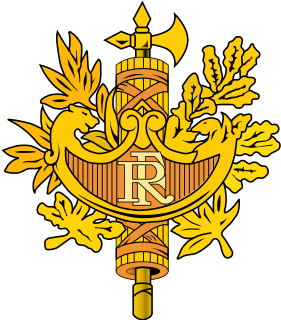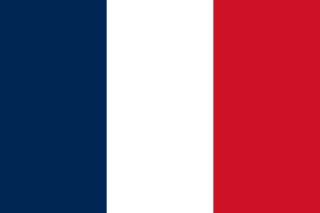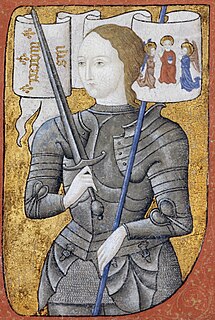 W
WNational symbols of France are emblems of the French Republic and French people, and they are the cornerstone of the nation's republican tradition.
 W
WThe coat of arms of France depicts a lictor's fasces upon branches of laurel and oak, as well as a ribbon bearing the national motto of Liberté, égalité, fraternité. The arms were created in 1905 by heraldic painter-engraver Maurice de Meyère, and adopted by the French government.
 W
WThe cockade of France is the national ornament of France, obtained by circularly pleating a blue, white and red ribbon. It is composed of the three colors of the French flag with blue in the center, white immediately outside and red on the edge.
 W
WThe Column of the Grande Armée is a 53 metre high Corinthian order triumphal column on the Rue Napoleon in Wimille, near Boulogne-sur-Mer, France.
 W
WThe diplomatic emblem of France is an unofficial emblem that was adopted in 1913 by the French Foreign Ministry as a symbol for use by French diplomatic missions and consular posts abroad. It was based on an earlier design by the sculptor Jules-Clément Chaplain. The emblem also appears on the cover of French passports.
 W
WThe flag of France is a tricolour flag featuring three vertical bands coloured blue, white, and red. It is known to English speakers as the French Tricolour or simply the Tricolour. The Tricolour has become one of the most influential flags in history, with its three-colour scheme being copied by many other nations, both in Europe and the rest of the world, and, according to the Encyclopædia Britannica has historically stood "in symbolic opposition to the autocratic and clericalist royal standards of the past".
 W
WThe Gallic rooster is an official national symbol of France as a nation, as opposed to Marianne representing France as a state and its values: the Republic. The rooster is also the symbol of the Wallonia region and the French Community of Belgium.
 W
WThe graphic charter of government communication is the graphic charter of the logo of France, used by government services. It was adopted in 1999 by the government of Lionel Jospin and revolves around a logo associating Marianne, the tricolour flag and the motto Liberté, Égalité, Fraternité to represent the French Republic. A redesign of this graphic charter was carried out in 2020.
 W
WThe Great Seal of France is the official seal of the French Republic. After the 1792 revolution established the First French Republic, the insignia of the monarchy was removed from the seal. Over time, the new seal changed. At first, it featured Marianne, symbol of the revolution. It evolved to show that the people developed their culture and politics. In modern times, it depicts liberty, along with aspects of culture such as art, education, and agriculture.
 W
WJoan of Arc, nicknamed "The Maid of Orléans", is considered a heroine of France for her role during the Lancastrian phase of the Hundred Years' War, and was canonized as a saint. She was born to Jacques d'Arc and Isabelle Romée, a peasant family, at Domrémy in the Vosges of northeast France. Joan said that she received visions of the archangel Michael, Saint Margaret, and Saint Catherine of Alexandria instructing her to support Charles VII and recover France from English domination late in the Hundred Years' War. The as-yet-unanointed King Charles VII sent Joan to the siege of Orléans as part of a relief army. She gained prominence after the siege was lifted only nine days later. Several additional swift victories led to Charles VII's consecration at Reims. This long-awaited event boosted French morale and paved the way for the final French victory at Castillon in 1453.
 W
WLiberté, égalité, fraternité, French for "liberty, equality, fraternity", is the national motto of France and the Republic of Haiti, and is an example of a tripartite motto. Although it finds its origins in the French Revolution, it was then only one motto among others and was not institutionalized until the Third Republic at the end of the 19th century. Debates concerning the compatibility and order of the three terms began at the same time as the Revolution. It is also the motto of the Grand Orient and the Grande Loge de France.
 W
WMarianne has been the national personification of the French Republic since the French Revolution, as a personification of liberty, equality, fraternity and reason, as well as a portrayal of the Goddess of Liberty.
 W
W"La Marseillaise" is the national anthem of France. The song was written in 1792 by Claude Joseph Rouget de Lisle in Strasbourg after the declaration of war by France against Austria, and was originally titled "Chant de guerre pour l'Armée du Rhin".
 W
WThe coat of arms of France depicts a lictor's fasces upon branches of laurel and oak, as well as a ribbon bearing the national motto of Liberté, égalité, fraternité. The arms were created in 1905 by heraldic painter-engraver Maurice de Meyère, and adopted by the French government.
 W
WTravail, famille, patrie was the tripartite motto of the French State during World War II. It replaced the republican motto, Liberté, égalité, fraternité of the Third French Republic.